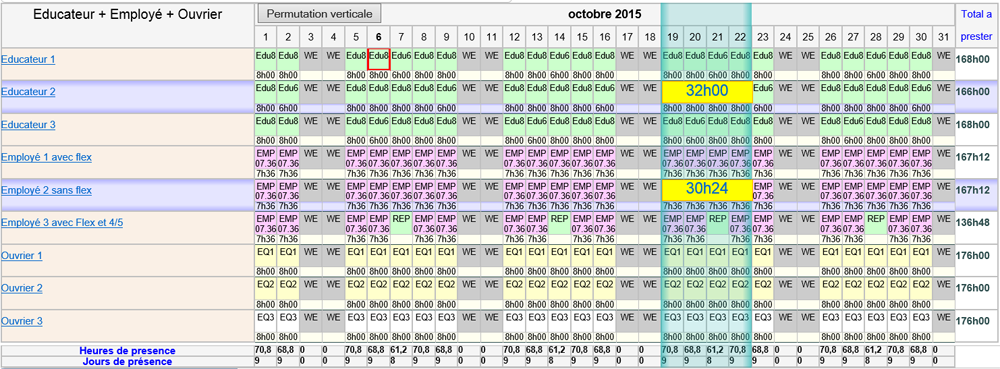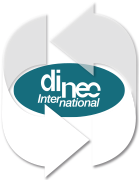Whether small, medium or large, each company has to manage time. In industry or the service sector, schedules are more and more flexible for staff members but more and more complex for systems. With its innovative modern design, DinClock software can accommodate most flexible or floating timetables, those with breaks, or others. The time management software works on a data server in connection with a webpage server. Each user can therefore have access to data from their Internet browser. Each employee can look at their own data. Managers have access to general data depending on their access level. The system enables different types of schedule to be created. Whether these are flexible, floating, with breaks or other, the system links up a succession of typical days made up of time slots which each have their own characteristics. Each time slot will influence the day counters and thus generate a time calculation. The system offers numerous possibilities for reports, whether these are linked to a person or a categorie of persons. Printing is done in the form of a list or a schedule. Each user can make requests for leave through the system. Their line manager can thus approve them. An email will confirm the operations. DinClock enables data transfer to external applications, such as payroll software. Anomalies are generated automatically by the system in the event that the defined time-keeping rules are not observed. These correspond to leave, lateness or forgetting to clock in or out. An anomalies report enables managers to deal with these and, above all, to make the system comply with established rules. | Whether it is a matter of leave, sick days or compensatory time off, DinClock allows these to be allocated to the entire company, to a category of persons or to an individual. When presenting their badges to the time clock, users can choose their own type of time management: • clocking in • clocking out • one of the programmed tasks Time management can be taken into account from: • an access control installation reader • a time management console with display • a workstation with a touch screen and graphics screen in a desk • a computer workstation Each user that has access to the server can use their workstation to clock in, clock out or to leave on an assignment. Each user receives a password to access data. Depending on the access, they can: • clock in or out and consult their own data from their workstation • validate and correct time management entries • administer the system • program settings | |



